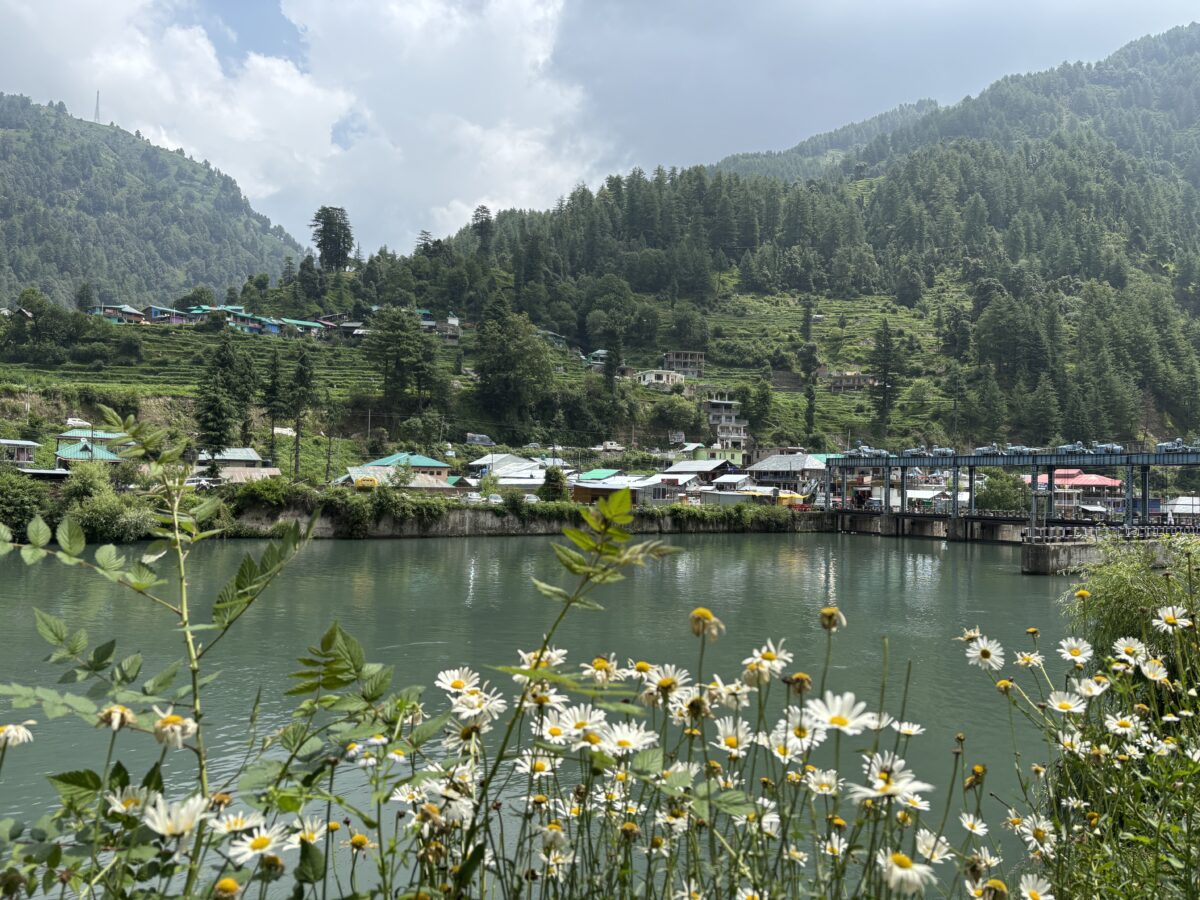
Beautiful hidden valley | Barot Valley | Himachal Pradesh
Barot Valley is beautiful hidden gem of Himachal Pradesh, nestled in the foot of the Himalayas surrounded by rich Deodar forests with Ulh River flowing through the valley
It was last week of June and we were expecting rain but fortunately on our way to Barot Valley, we found little rain and a pleasant weather and we could reach without any hurdle on the way.
Delhi to Chandigarh
We started early in the morning from Delhi. It took us 5 hours to reach Chandigarh and we checked in to a hotel in Sector 17 market. We avoided driving for straight 9 hours to reach Barot. On the way we also intended to explore Chandigarh. In the evening we explored the sector 17 market till late night and enjoyed the food. Back to the hotel we planned to leave early in the morning for Barot Valley.
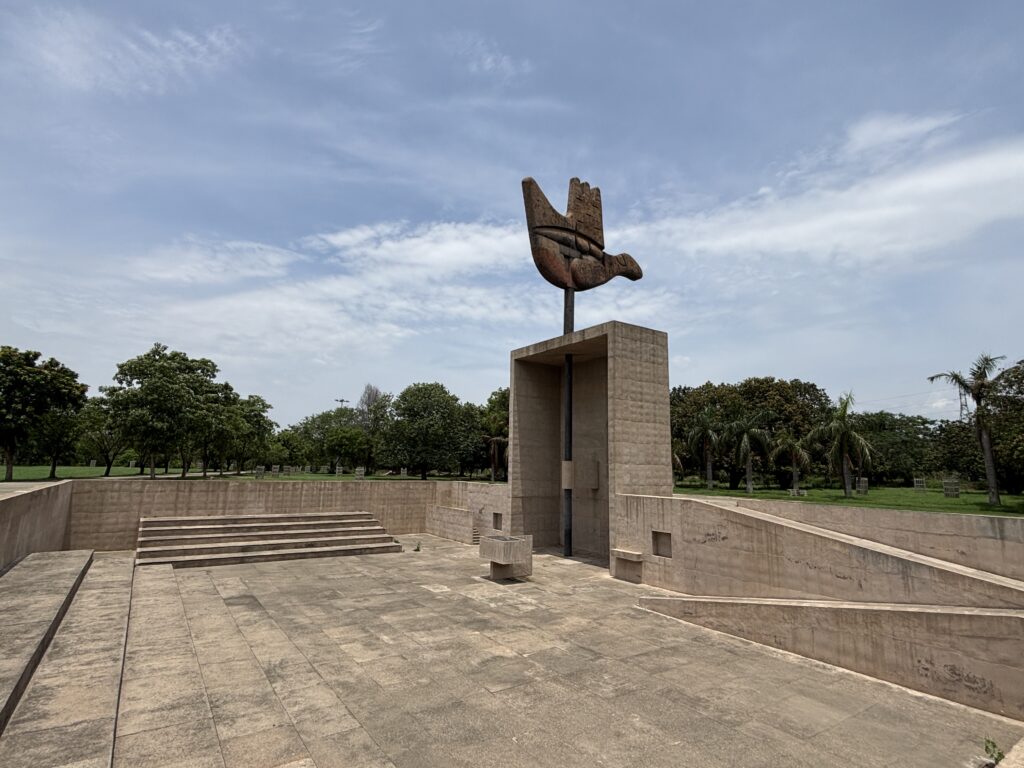
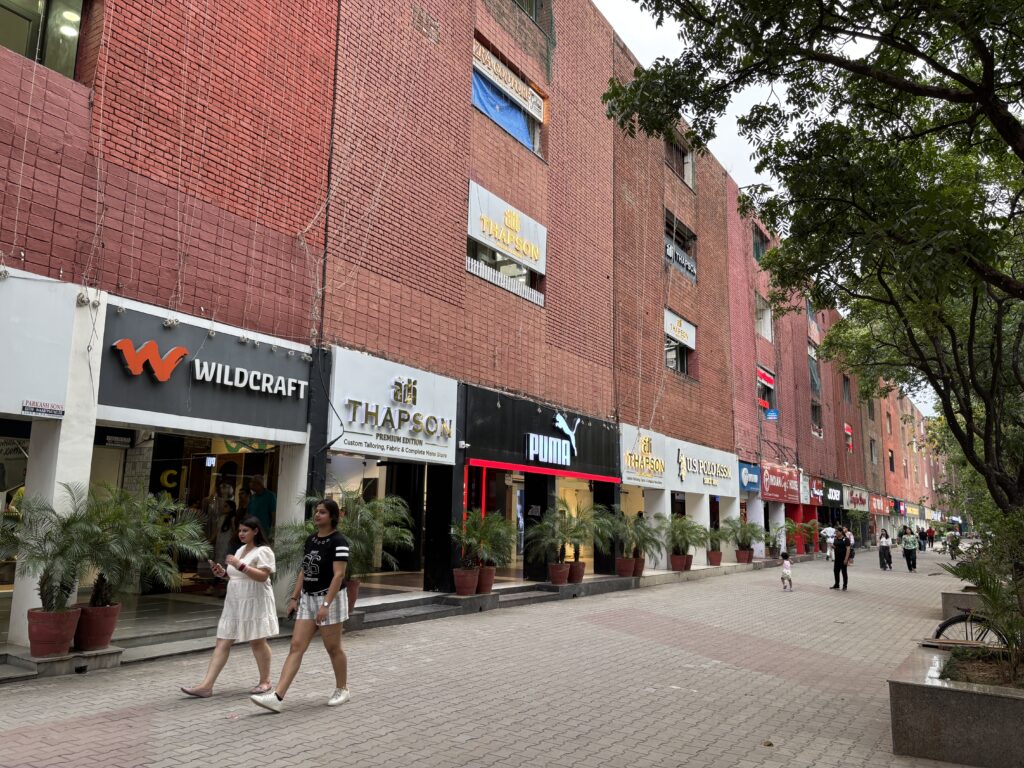
Chandigarh to Barot Valley
The distance from Chandigarh to Barot is about 230 kms and can be covered in 5-6 hours of drive. We drove through Roopnagar, Sundarnagar to reach Mandi. The road after Mandi was under construction and we faced many diversions there. It started raining heavily at this point which force dus to take a lunch break. It was a small homely neat and clean restaurant by the side of the highway by the name Spice Potli. The owner himself served us hot Rajma Chawal and we enjoyed the lunch and resumed our journey again.
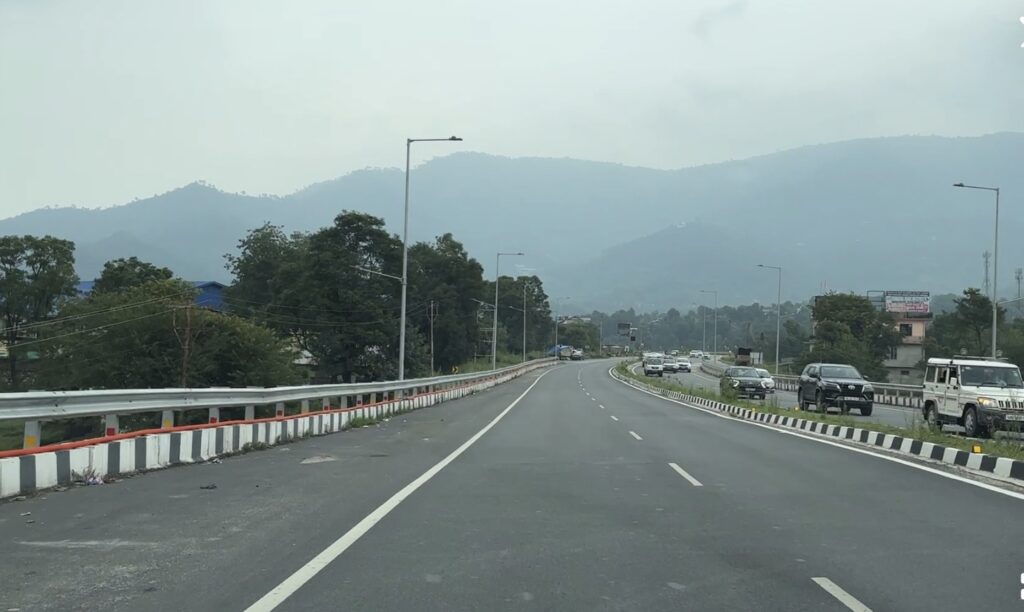
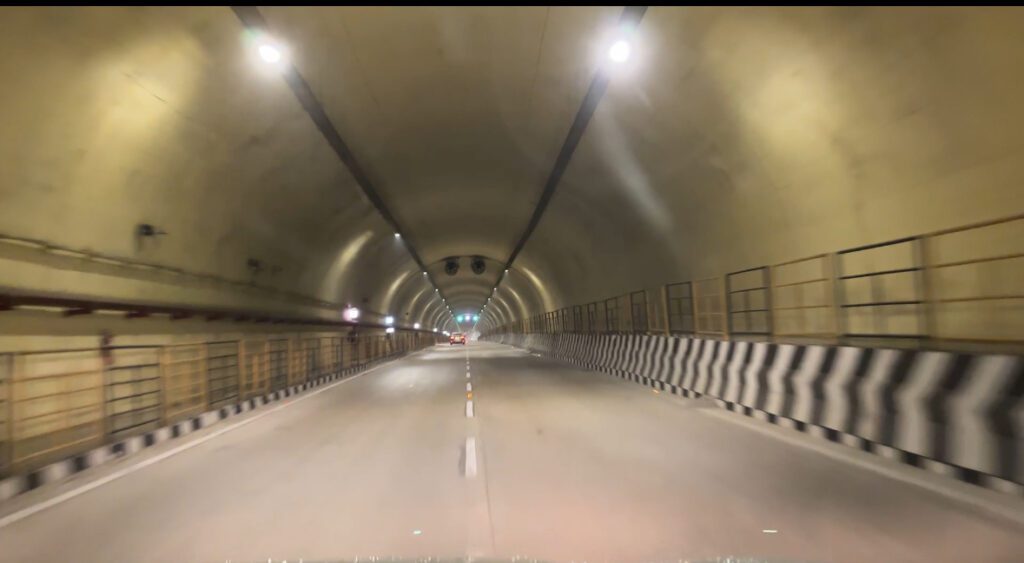
We drove on Mandi Pathankot highway till diversion for Barot at Ghatasani. From Ghatasani, Barot Valley is only 22 kms and it takes less than hour to reach Barot. The scenic beauty enhances from this village onwards. As you gain height you are introduced to the beautiful clouds over the green terrace farms and mountains on all sides.
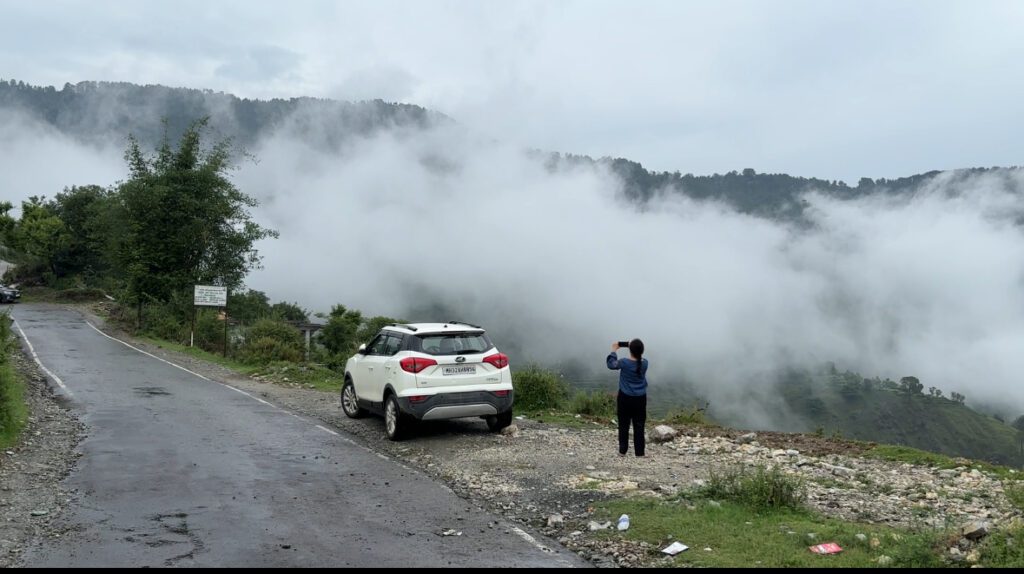
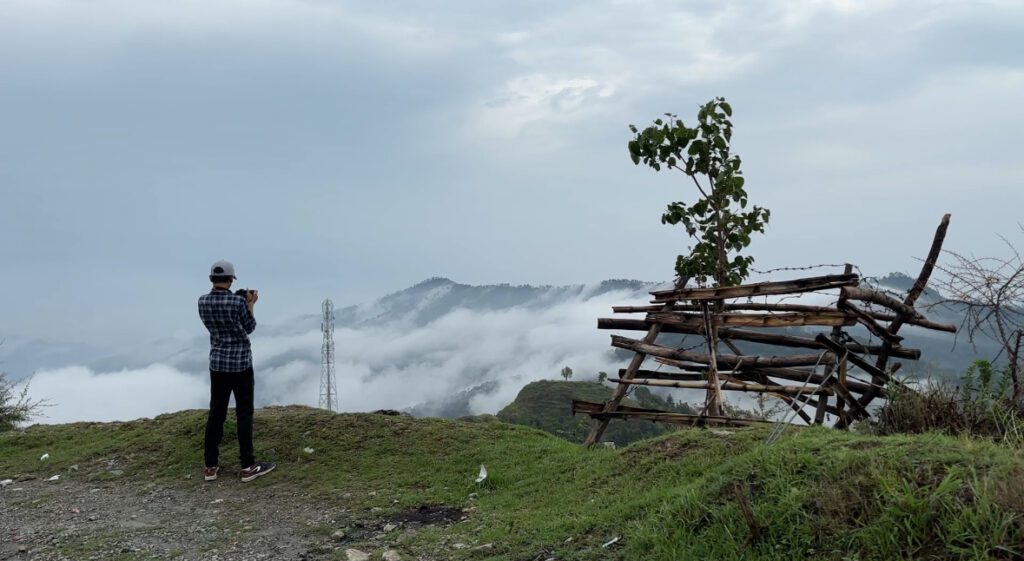
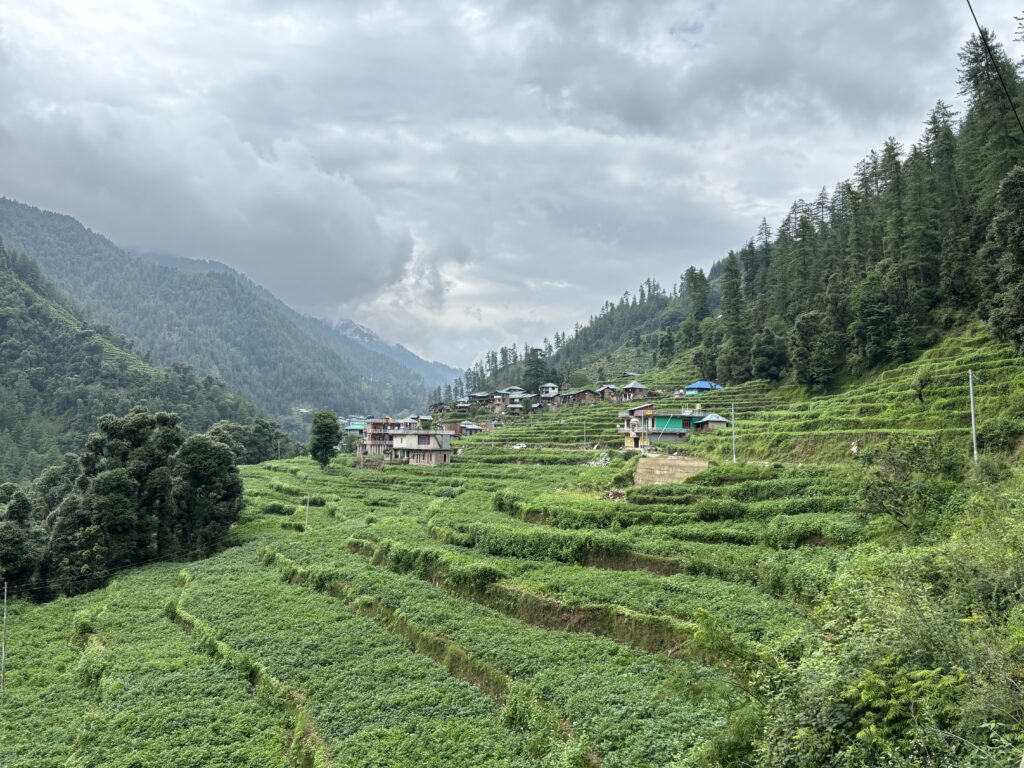
We continued towards Barot with breathtaking views all around after the rain. The pine trees on both sides of the road soon changed into Deodar forests as we gained more height. The valley appeared all the more beautiful with lush green terrace farms, old Himachali houses in between and the white river flowing across the valley. The mountains on the other side of the river consisted to dense Deodar forests.
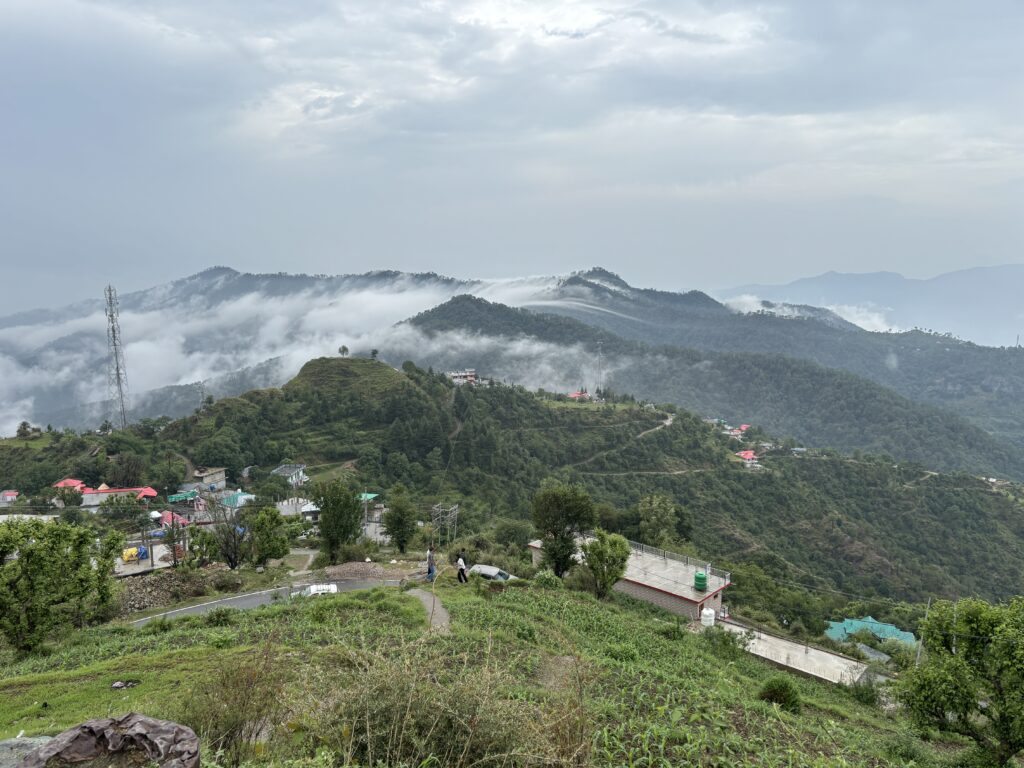
Finally we reached the small hamlet and road soon narrowed down to a small market of Barot. Crossed the bridge on the Ulh river and the Dam and reached on the other side where few hotels were located.
Barot Valley
We had booked the hotel room online while in Chandigarh. We checked into Hotel RajKamal. The decent room was facing the river and from the window, the view was mesmerising.
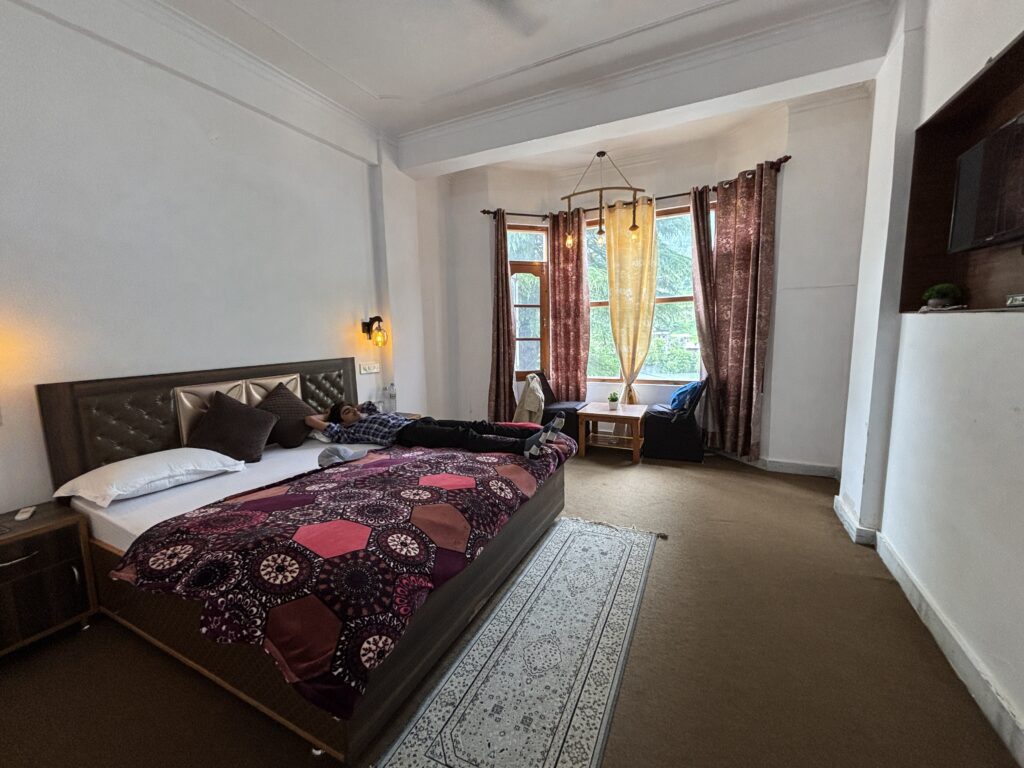
We ordered tea and after some rest we headed outside to explore the local vibes. It was a beautiful small place with few tourists by the side of the river. Others were having snacks at the local snack shops. The greenery of the place, the white river flowing past and the Deodars in the backdrop were picture perfect. Tourists were having good time clicking pictures by the side of the river.
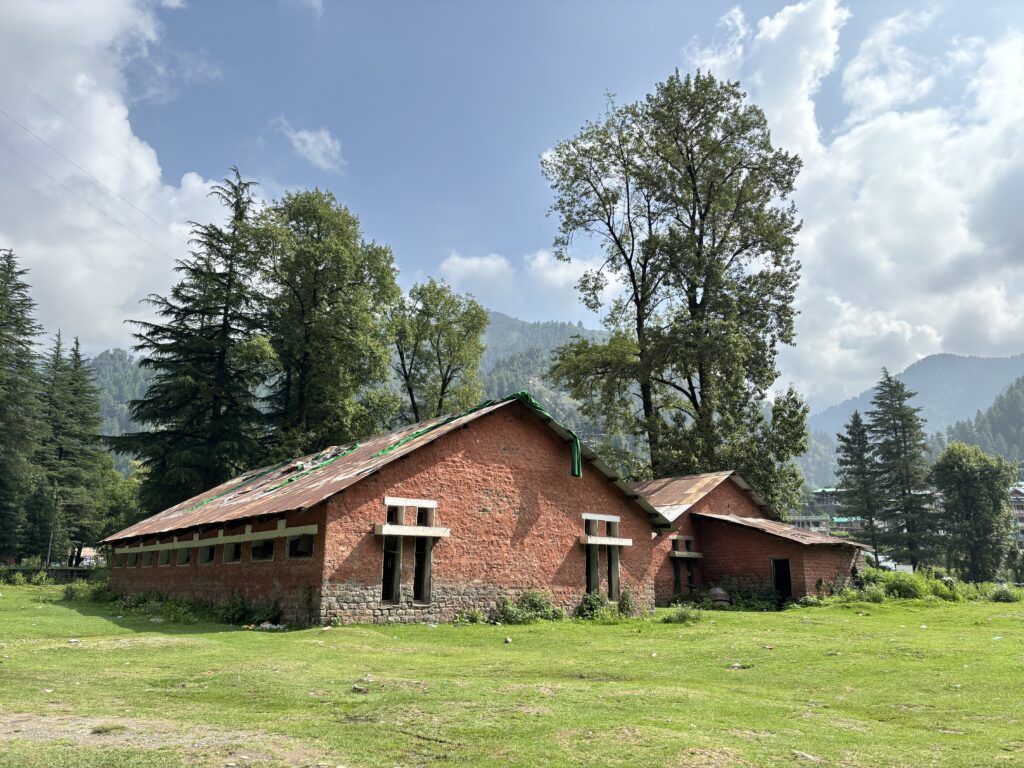
There were few eating stalls which were serving hot snacks and tea.
Exploring Barot Village
There was a small waterfall one kilometer away as suggested by the hotel owner, we started hiking to the place passing by the small village on one side and Uhl river on the other side.
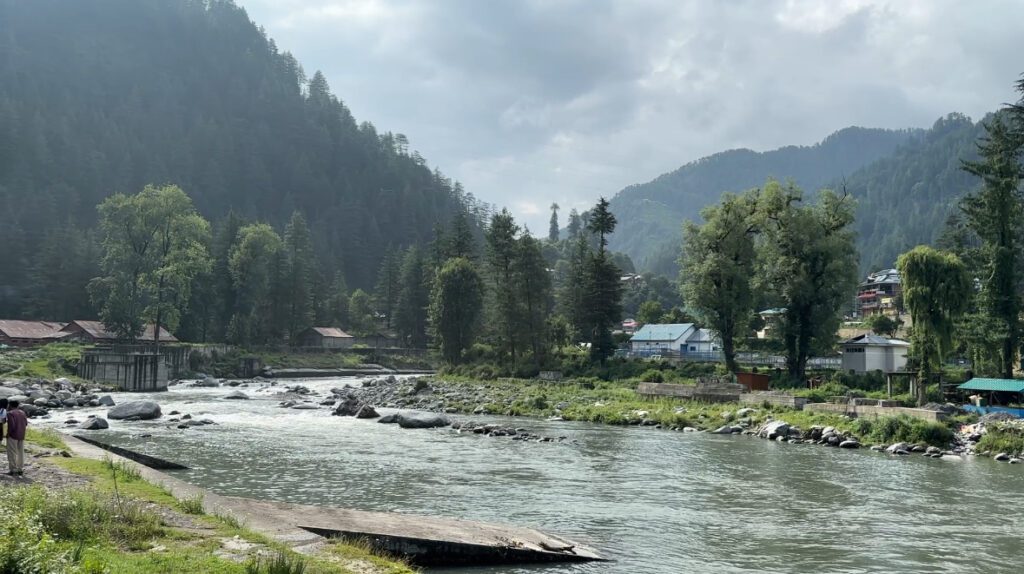
Crossing the river bridge at one point and walking few minutes we reached the spot. It was a nice small waterfall, although the water at this time of the year was not so much but the three storied fall was looking beautiful.
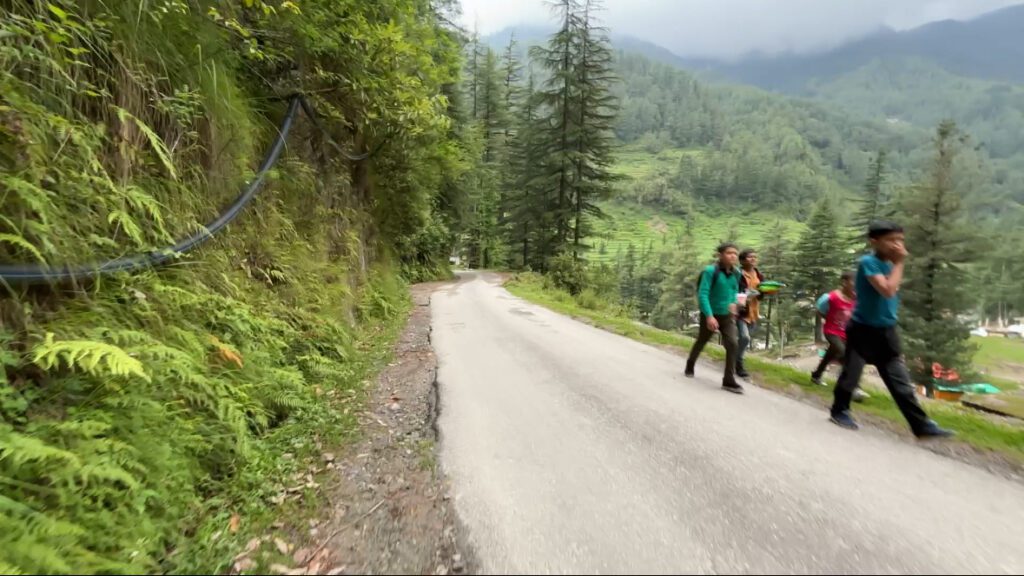
After spending some time, we walked back by the same bridge and noticed an old machinery on the other side of the bridge. On exploring we came to know that the machinery was related to the small rail track present there which was going uphill upto a distance. It was a system of pilling a trolley uphill on the small rail tracks like that of a tot train.
We came to know that it was earlier used to transport material uphill when the Dam construction was done during the British times. It was a historic equipment indeed.
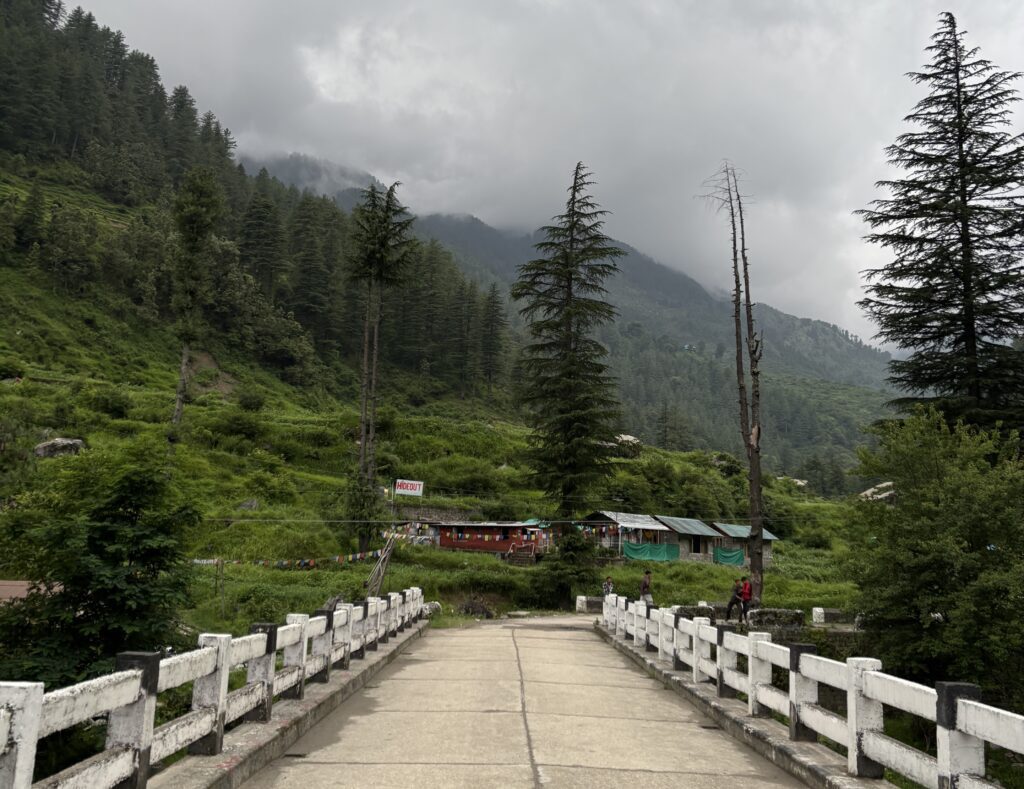
We resumed our walk back to the hotel enjoying the views on the way.
Famous food in Barot Valley | Food to try in Barot Valley
We noticed a small snacks stall where a local lady was selling hot “Siddus”, a local Himachali dish served with three types of sauces.
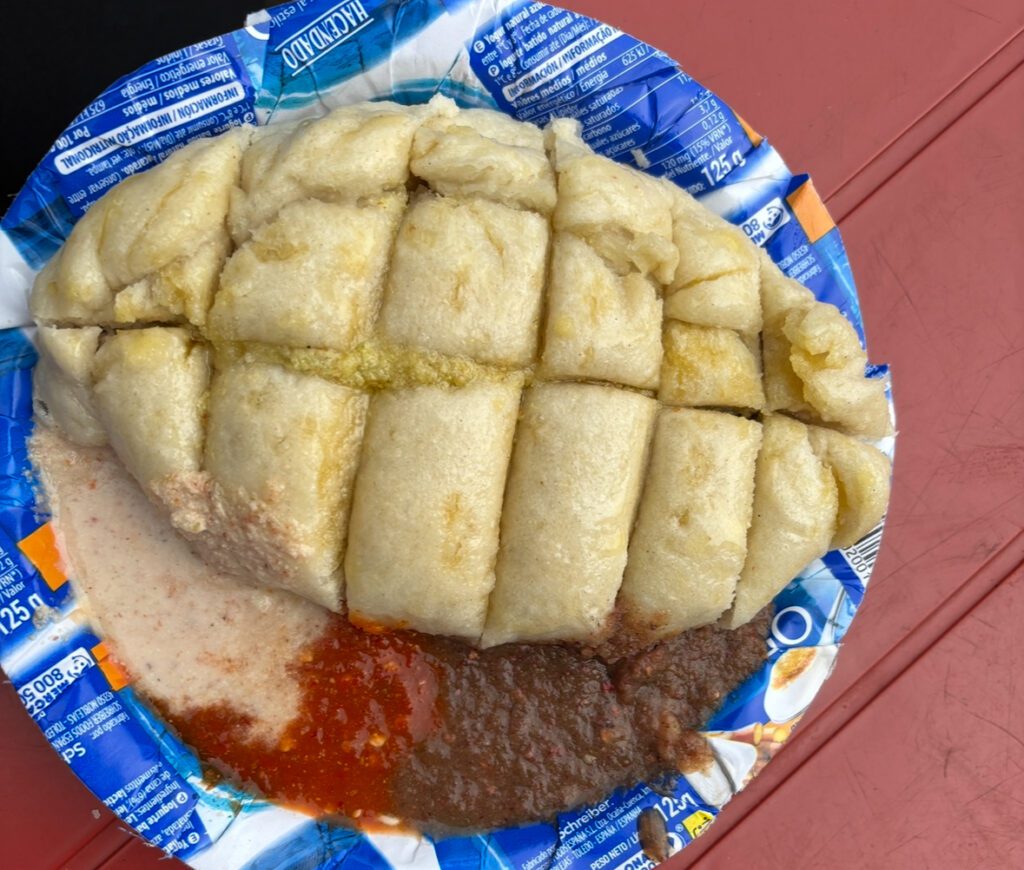
It is actually a fermented steamed bread/bun commonly made from the wheat flour often stuffed with various fillings like crushed walnut, local spices served with Ghee (clarified butter). Everytime we visit Himachal, we search for this dish as it is healthy and tasty too.
Our first day in Barot ended with a pan fried trout in dinner. This place is famous for trout fishes and there is a trout farm right by the side of the river at a walking distance from the Dam.
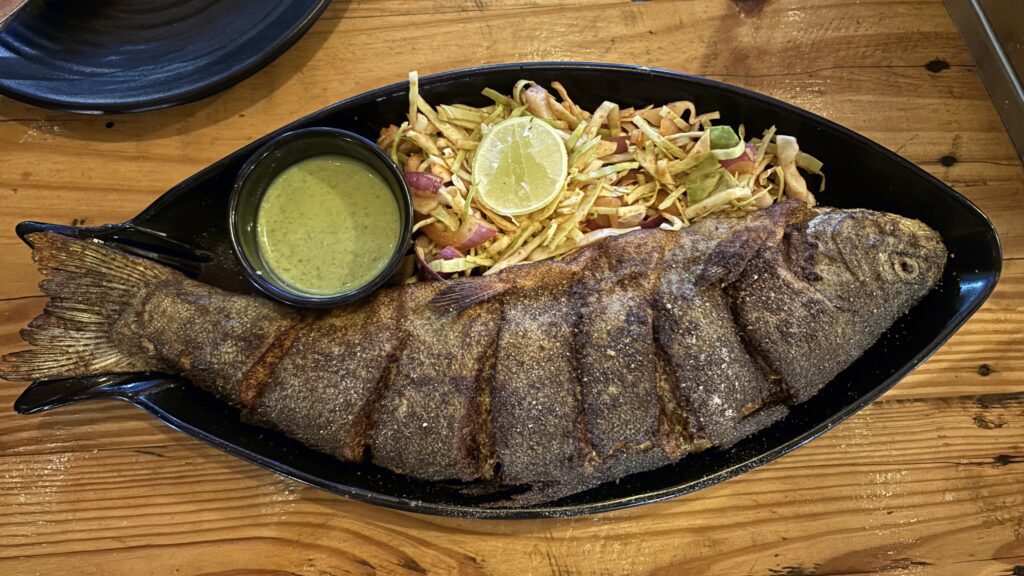
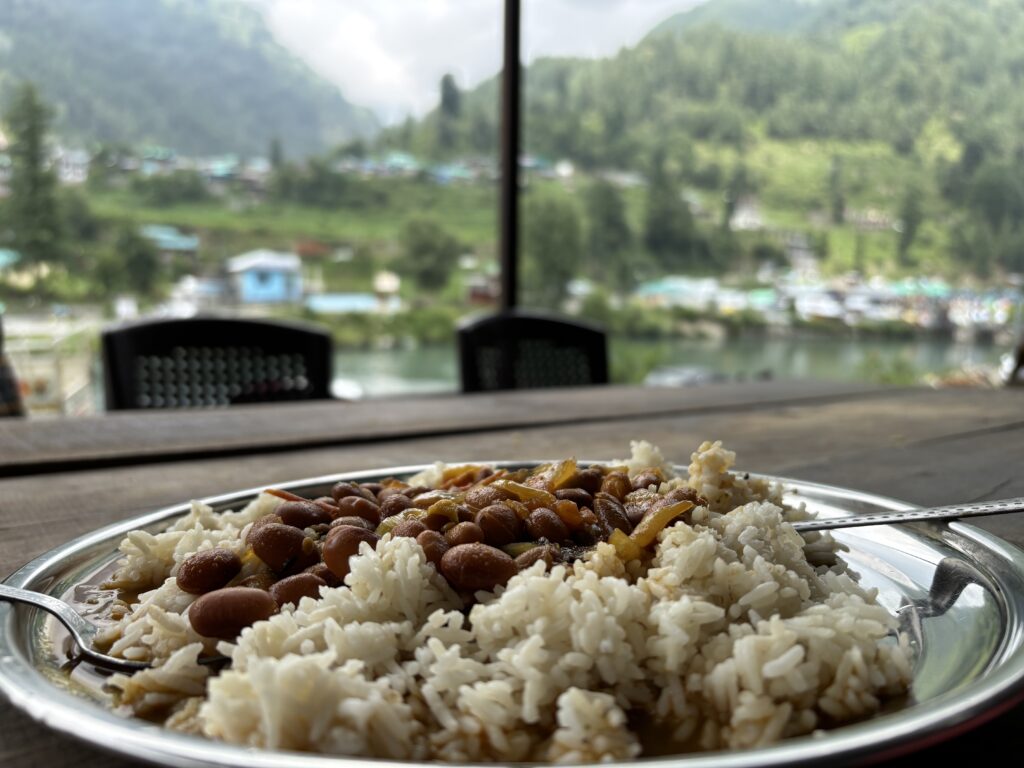
Exploring Barot Valley
On the second day in Barot we planned to visit the Dam reservoir. We started the day with Siddu in breakfast and brief darshan at the local temple nearby the food stalls. Dam reservoir was at a walking distance from here.
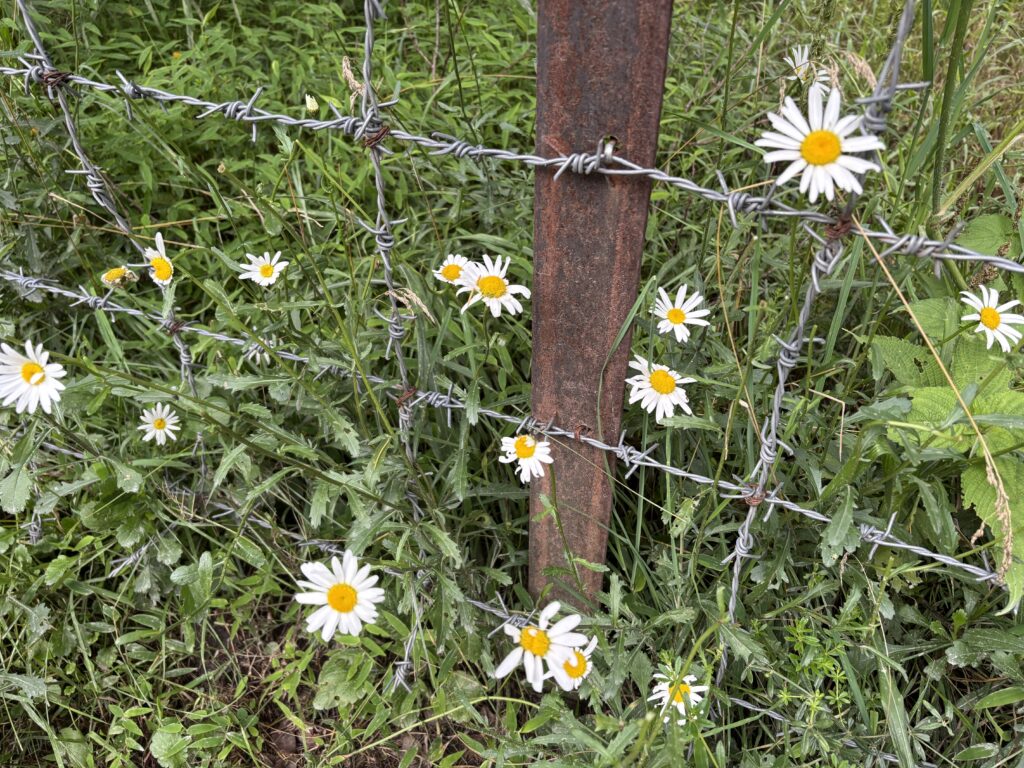
The reservoir was looking awesome and the falling water was no less than a waterfall. It was soothing for the eyes and the whole atmosphere was full of calmness and peace.
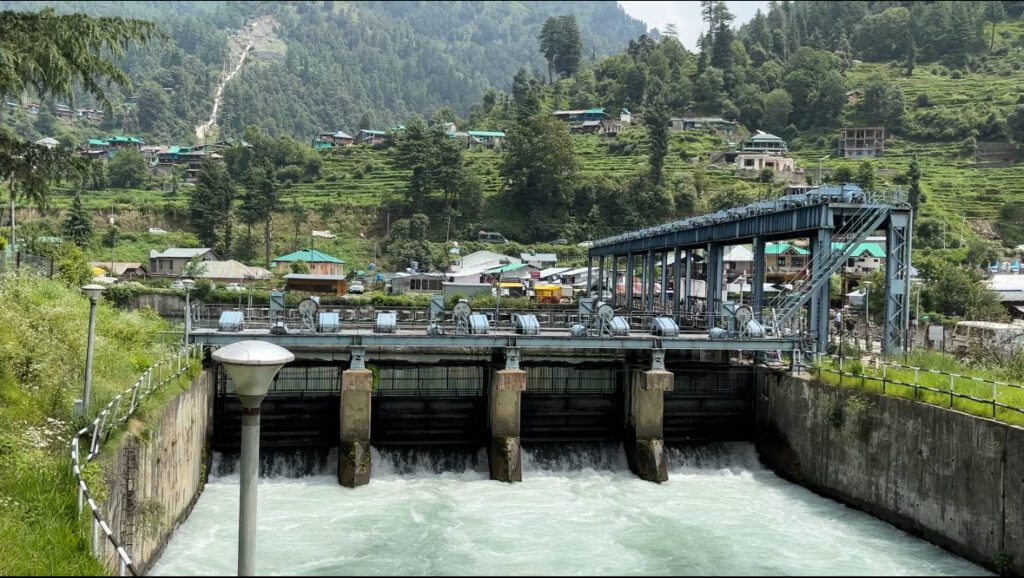
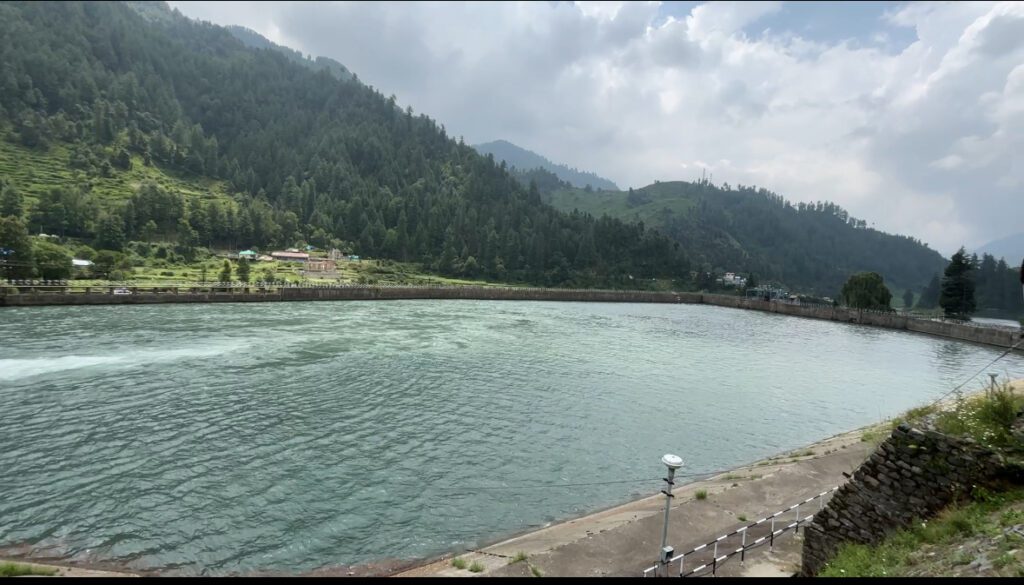
Barot Valley Himachal – Places to visit
Uhl River
Old Trolley spot
Dam and the Reservoir
Col. Bettys House
Local Market
Waterfall
Trout Fish Farm
Dev Pashakot Temple
Lapas Waterfall
Col. Betty’s Cottage
From the reservoir, there is a narrow trek uphill towards the small cottage of Col. B.C.Betty known by the name of Bettys House. Col. B.C. Betty was the British engineer who played a key role in the development of the Shanan Hydropower project, building a Dam here in the 1930s. It was actually the first hydro electric project in terms of megawatt capacity.
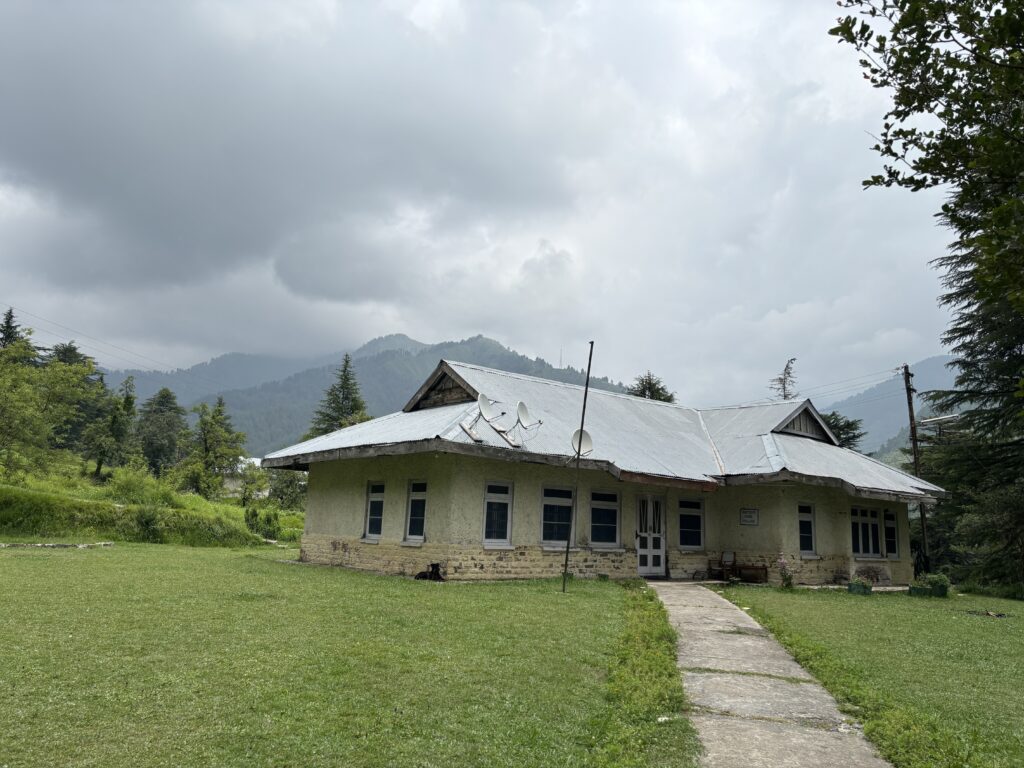
Bettys House is now a rest house under the control of Punjab State Corp. Ltd. After half an hour of moderate hike we reached the Bettys House. It was an old structure but located at a very beautiful place overlooking the Dam reservoir and the rest of the Barot Valley.
There was a small village of 10-12 houses at a small distance away from the Bettys house. We rested for some time and absorbed the calm vibes of the beautiful place. Started our return journey back, we came across an abandoned room on our way back just a small distance from the Bettys house. We discovered it was equipped with water heating system used at that time to supply heated water in those early days. It was not functional.
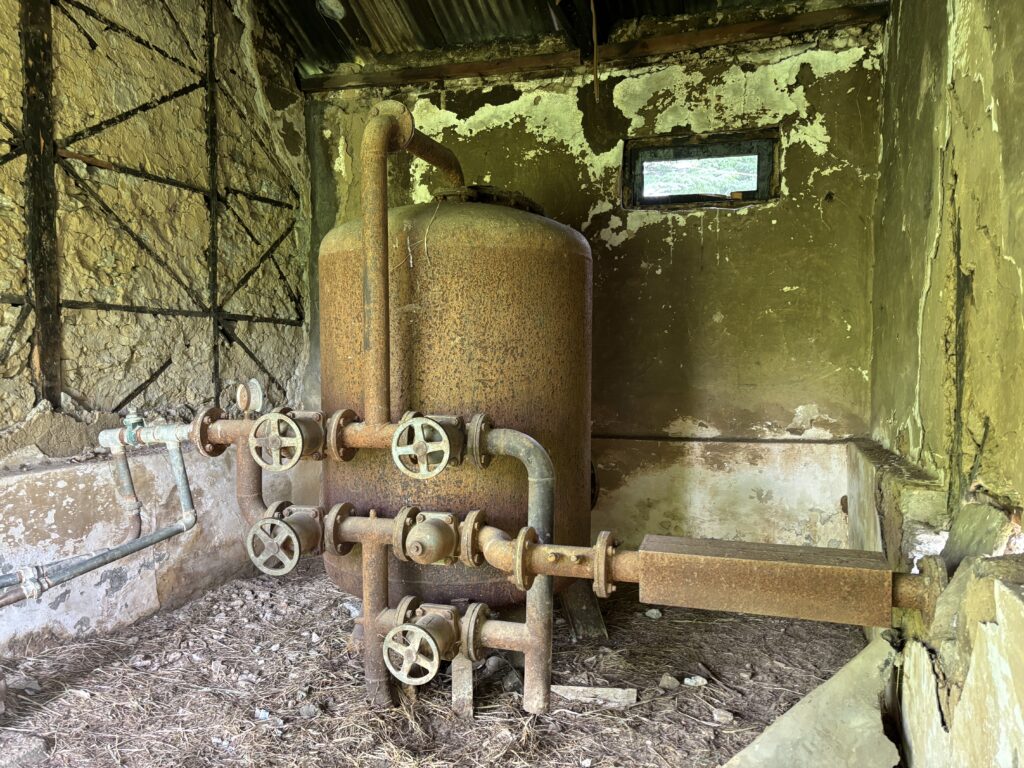
Started walking back and on the way downwards diverted intentionally towards left side in the forest towards Pashakot Temple. It took 10-15 minutes of walk from within the forest to reach the temple which was located very close to the road below by the side of the river where the food stalls are located.
Pashakot Temple, Barot
It was a beautiful small temple made up of typical Himachali archetecture of stone walls with wood in between and roof made up of local slate. Coloured flags and offerings were tied around the temple.
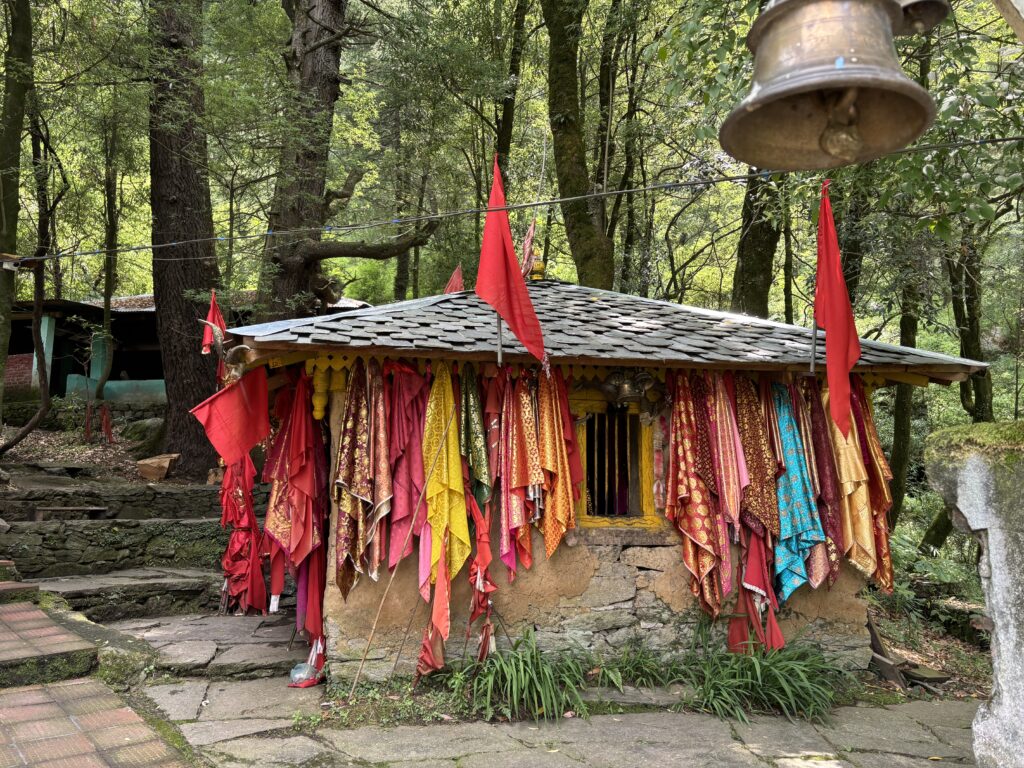
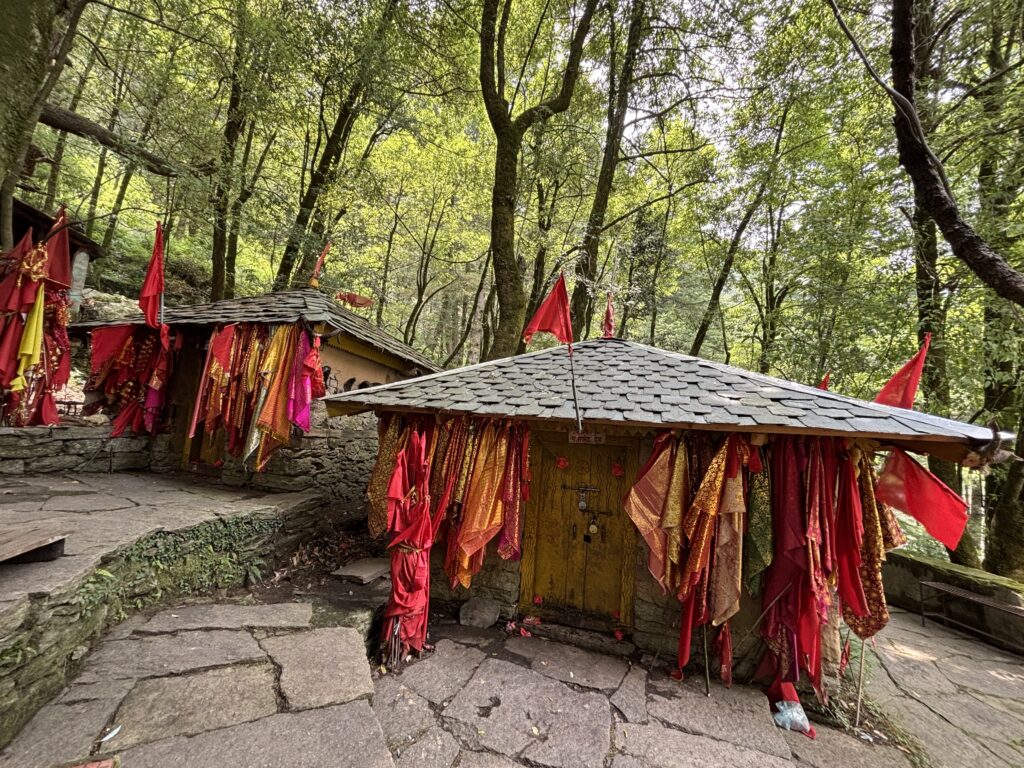
We stepped down after darshan at the temple and saw a small wooden food stall selling local Rajma chawal. We ordered one for lunch and enjoyed the food watching the river flowing by the side. Later, we found out in the market that this small place produces 4-5 different varieties of Rajmas and similar varieties of lentils or dals. We bought few packets for our own use at home.
After having lunch, we decided to explore the upper road market across the river just opposite the trout fish farm. There were few shops although, one shop was selling local woolen being weaved right there. The products included Himachali caps, jackets, shawls stoles etc. Other shops were selling grains like Rajmas, Dal and other local vegetables. There were some local jewellers and souvenir shops.
We came back to our hotel for dinner now.
Trip to Lapas Waterfall
Next day we had plans to visit the Lapas waterfall which was located 6-7 kms from Barot. After breakfast we were ready to leave for the Lapas waterfall when we came to know that the rear tyre was flat. I called the hotel owner who helped me to inflte the tyre so that i can reach the shop nearby for repair. The local shopowner was like jack of all trades and was entertaining the locals over the tourists. So i drove a little uphill as suggested by the hotel owner to find another puncture shop. This time the man was listening to the radio and reading news paper. On seeing my car stood up and started working to fix my tyre. Within 15 minutes we were ready to go. We reached Lapas village where the last 2 kms were too steep to climb for any vehicle. But the local guy suggested that i can take my car alittle more uphill to find a nice parking place. I climbed the steep hill full of mud and loose soil to finally reach the point and parked the vehicle.
Lapas Waterfall
A short 1 kilometer trek from the Lapas village will take you to the beautiful waterfall in between the lush green forest. You will pass through the beautiful terrace frms that you earlier saw from a distance from the road. It is a very enjoyable experience to walk through these terrace farms to reach the waterfall. The waterfall is no doubt beautiful but there is very less space to sit and enjoy the view as many tourists flock this place during the season.
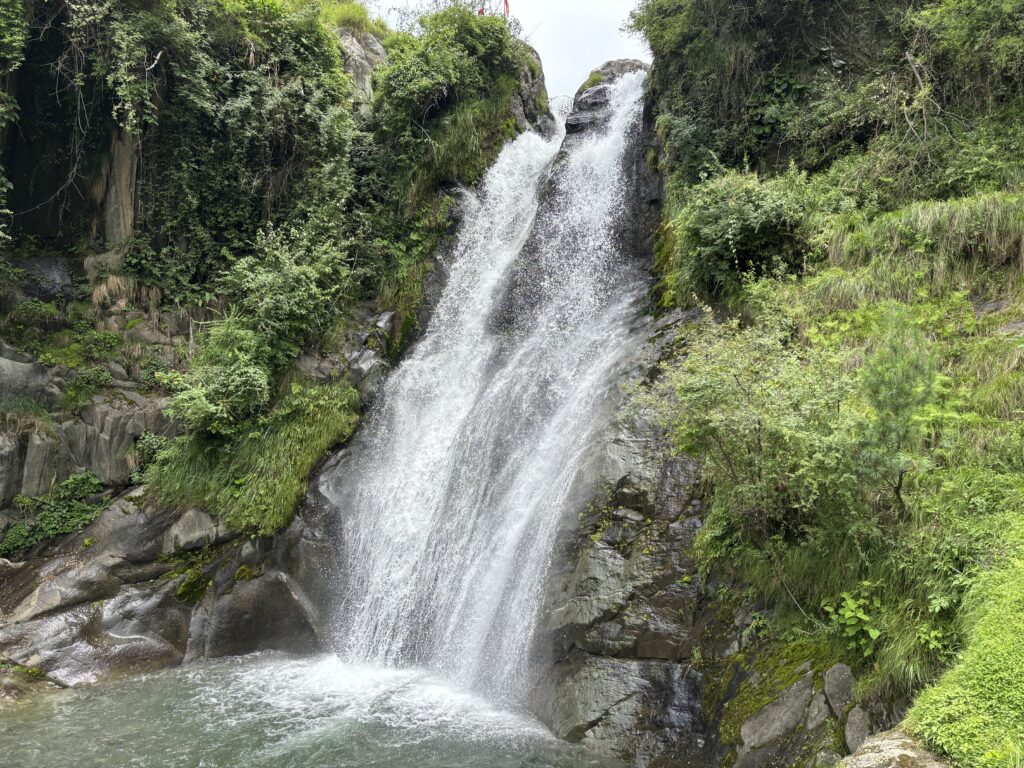
We spent around half an hour taking pictures and enjoying the beauty and then started our journey back to the village. Drove back towards Barot. Our next place to visit was the trout farm.
Trout Farm, Barot Valley
The farm is conveniently located near the market just besides the PWD resthouse. There are rows of different pools maintained to breed the trout fish.
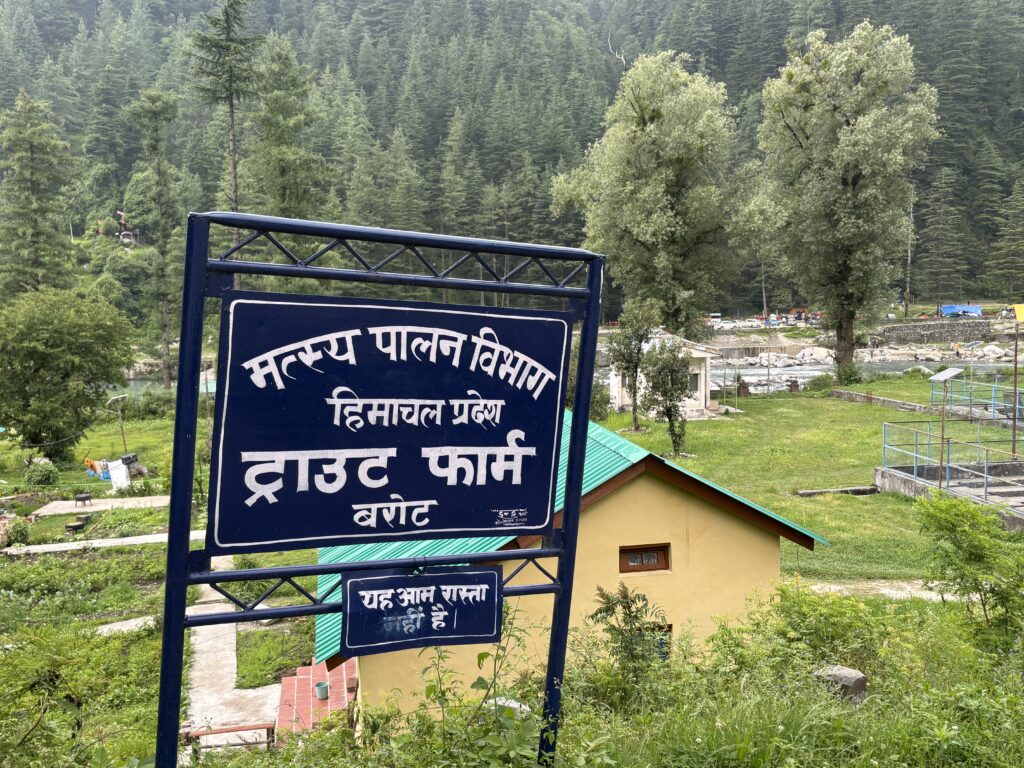
Here at trout farm we saw how breeding of trout fish is done in different ponds made specially for trout farming well protected by fencing. Shoals of fishes were visible in the ponds and they seems to be in different stages of development. We enjoyed the informative visit to the farm. We had plans to leave for Bir- Billing via Rajgundha Valley next. On the way was another waterfall known by the name Kothikoher Waterfall named after the name of the village in which it is located.
Barot to Kothikoher Waterfall
Just half an hour drive from Barot stood the Kothikoher village and you just have to park your vehicle near the bridge for a short trek towards the waterfall. Although we took our car on this rough stone path for some distance halfway of the trek towards the waterfall but later decided to park the vehicle there only to avoid any unwarranted situation. The stones were too large and loose to drive upon. After 5-10 minutes of trek you will reach the beautiful waterfall. There is no commercial activity here and you enjoy the serene nature at its best.
After spending some time here, we resumed our journey towards Rajgundha Valley from where we had plans to reach Bir by evening. We passed by the Kothikoher bridge and drove towards Rajgundha.
Barot to Rajgundha Valley
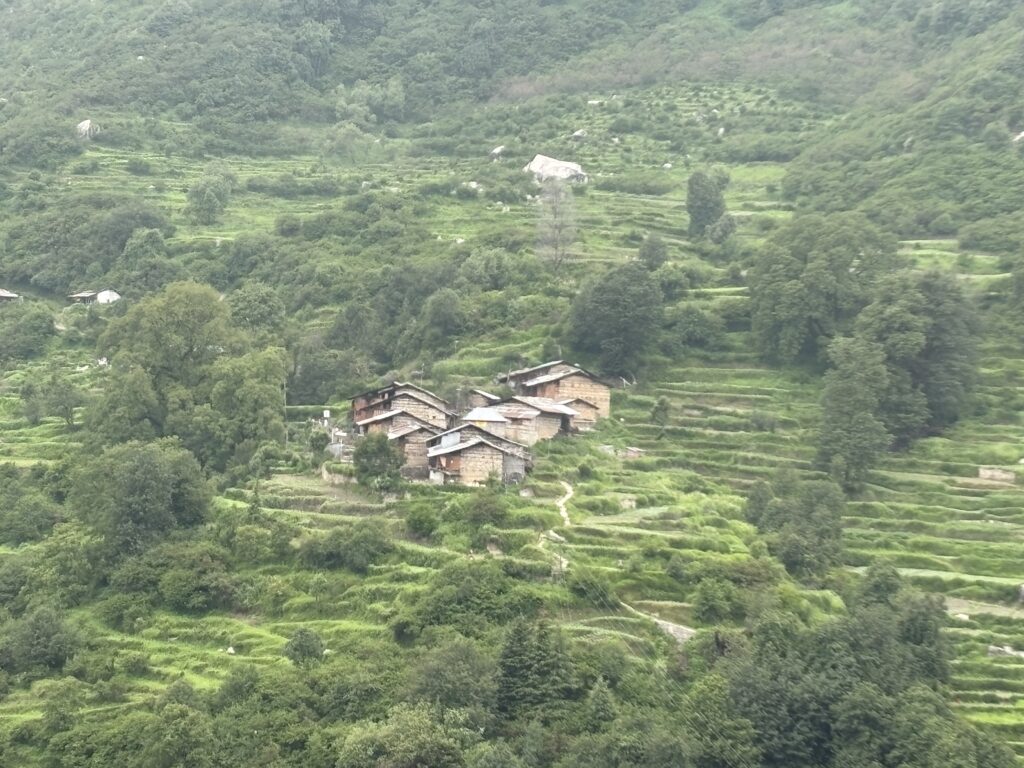
As we passed by the small quite villages we found the valley very quite and beautiful. The commercial activity is at its minimal here in Rajgundha Valley. There are a few hotels on the way. The whole landscape was very beautiful and mesmerising. With lush green terrace farms, people working on farms, small little villages in between the farms, the white river flowing. This valley was more beautiful and picturesque and there was almost no vehicle crossing by. It was kind of a sleepy village in a sense. We passed by Badagram, another beautiful village and after few minutes of drive we reached the bridge which is built on the river Ulh.
This was a recently opened bridge. It was inaugurated few years from now and before that people used to trek to reach Rajgundha Valley either from Barot or from Billing. It is now possible to drive in between these two places and reach Rajgundha Valley.
The old bridge on Ulh river
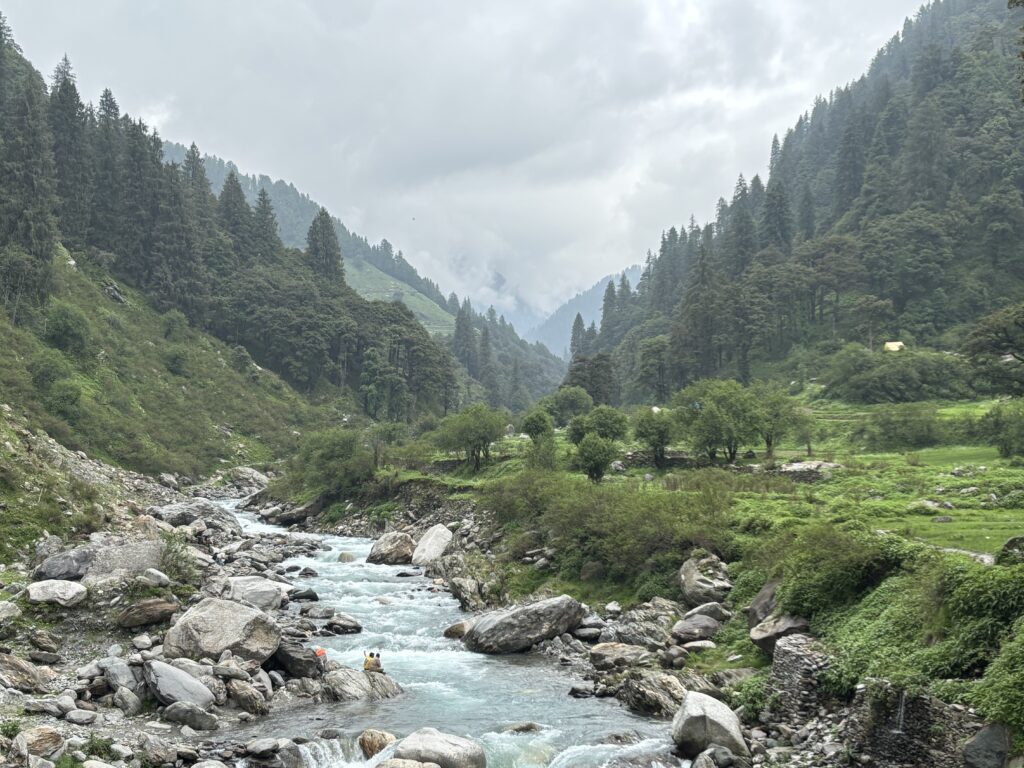
On our way, we saw this bridge and found out great views of the river and the mountains in the backdrop. It was really very beautiful scenery from this place and the old bridge was hanging worn out and not in use. Few people were sitting on the big rocks by the side of the flowing river, white water gushing at great speed swiftly through the rounded rocks and boulders. This was ideed a very beautiful location and there was a small basic hotel also there.
Rajgundha Valley
We again resumed our journey towards Rajgundha and Bir. Bir was just 25 kilometers from this place. It started raining again. The road was narrow, empty but beautiful. We passed the Rajgundha Village which appeared sleepy but the views were breathtaking from this point of the valley. We had no plans to stay here at Rajgundha as we have already booked our accomodation at Bir.
Suddenly it started raining heavily and due to poor visibility we decided to stop at the next turning near a small temple and fortunately there was a small tea shop there. We parked the vehicle and walked it to find a dark room where local people were enjoying tea.
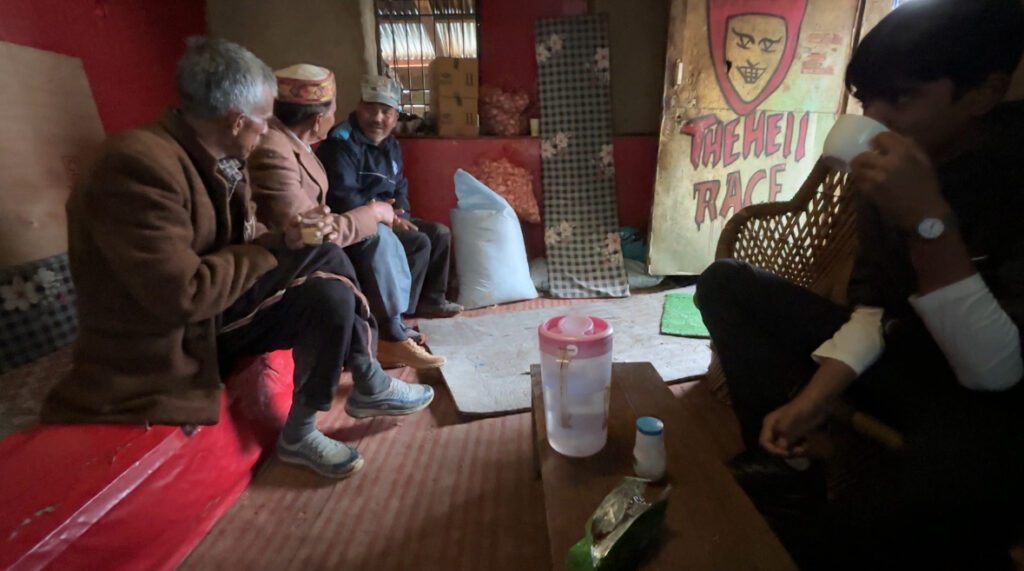
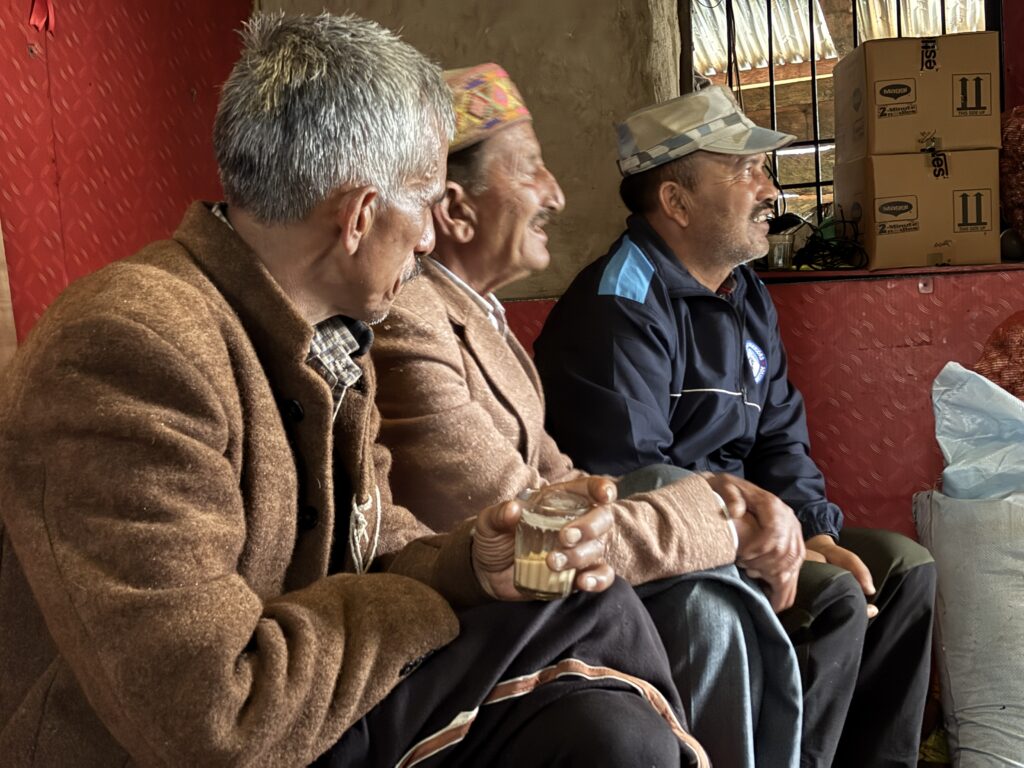
I opened the google map to see where we have reached and came to know that we just crossed the Mandi border and were now into a new district called Kangra. Bir was just 20 kms from here. We were waiting for the rain to slow down, meanwhile we enjoyed tea and biscuits in this small tea shop. Some locals were also sitting talking in their local language and enjoying tea.
Billing – The take off point for Paragliding
Finally, it stopped raining and we resumed our journey towards Bir. After 15-20 minutes of drive we reached Billing,a small village known as the take off site for Paragliding. Many tourists were present there as paragliding was halted due to rain. we passed by the thick forest road to finally reach Bir. The scenic Deodars now changed into pine forest as we lost elevation.

It was 6 in the evening and it was right time to stop driving and check-in to some nice hotel for stay.
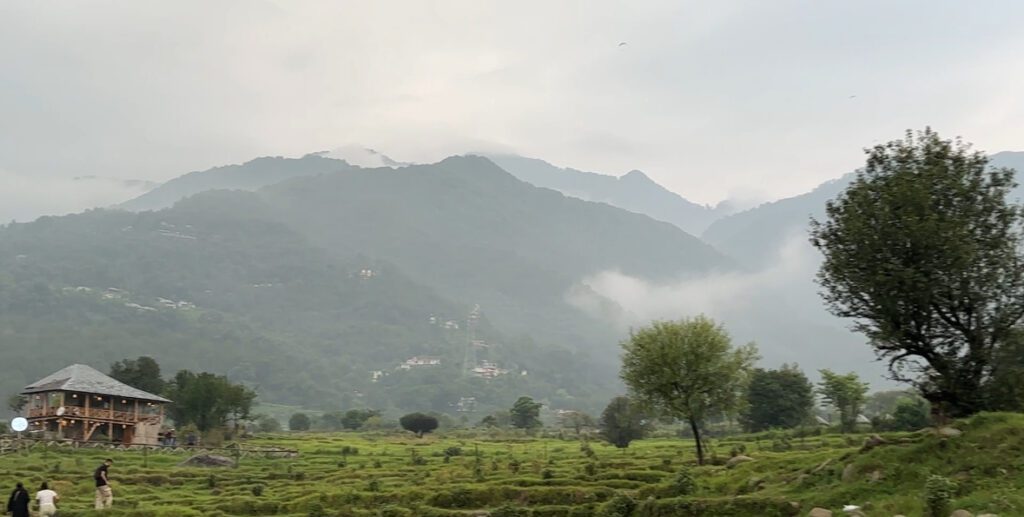
We checked into Ramsailvilla Hotel near the landing site. We had been to this place before in 2021, second corona wave and stayed here at that time for a month. The view from the window was awsome, a 180 degree of terrace farms almost flat and lush green.
Bir
Bir is a small little place, a village or you may call a small town nestled in the Kangra Valley of Himachal Pradesh. It is known as the paragliding capital of India with take off site about 12-14 kms uphill at Billing village.
The place is mainly dominated by the Monastery and Buddhist Temples. There is a proper Tibetan Refugee colony here and monks can be seen here in their daily chores.
In the evening we saw lots of paragliders landing as the rain has now stopped. Many other tourists were also watching the landing paragliders and enjoying the weather at Bir landing site. Cafes were now lighted for welcoming the evening guests. Some live music was also going on in some cafes. We chose to wind down early and get ready for the next day as we were already tired.
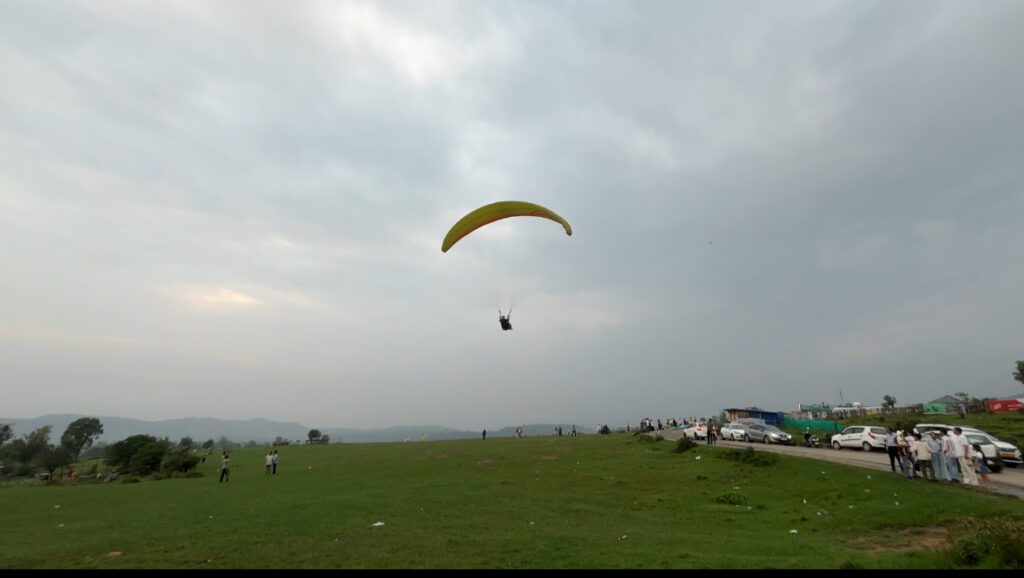
The best time to visit Bir-Billing for paragliding is from March to June and then after the monsoon from September to November.
Things to do in Bir Billing
Paragliding – Can be booked locally through the agents at competitive price.
Trekking – can be booked with a group through local agents or online.
Camping – can be booked through local agents or online.
Mountain Biking
Visiting the Tibetan Monasteries – Palpung Sherabling Monastery, Tsering Jong Monastery, Deer Park Institute: A center for the study of classical Indian wisdom traditions, offering courses, workshops, and a quiet place for reflection.
Tibetan Market and exploring Cafes – Bir has a vibrant cafe culture offering variety of cuisines.
Baijnath Temple – At a distance of only 14 kilometers is the ancient temple of Baijnath.
Bir to Baijnath
Next day morning we checked out of the hotel. We had planned to visit the famous Baijnath Temple and then leave for Chandigarh. We reached Baijnath in half an hour of drive. It started raining and we entered the temple taking umbrellas in hand. The rain was so intense that rain water was flowing or gushing through our feet as we were climbing the stairs at the temple.
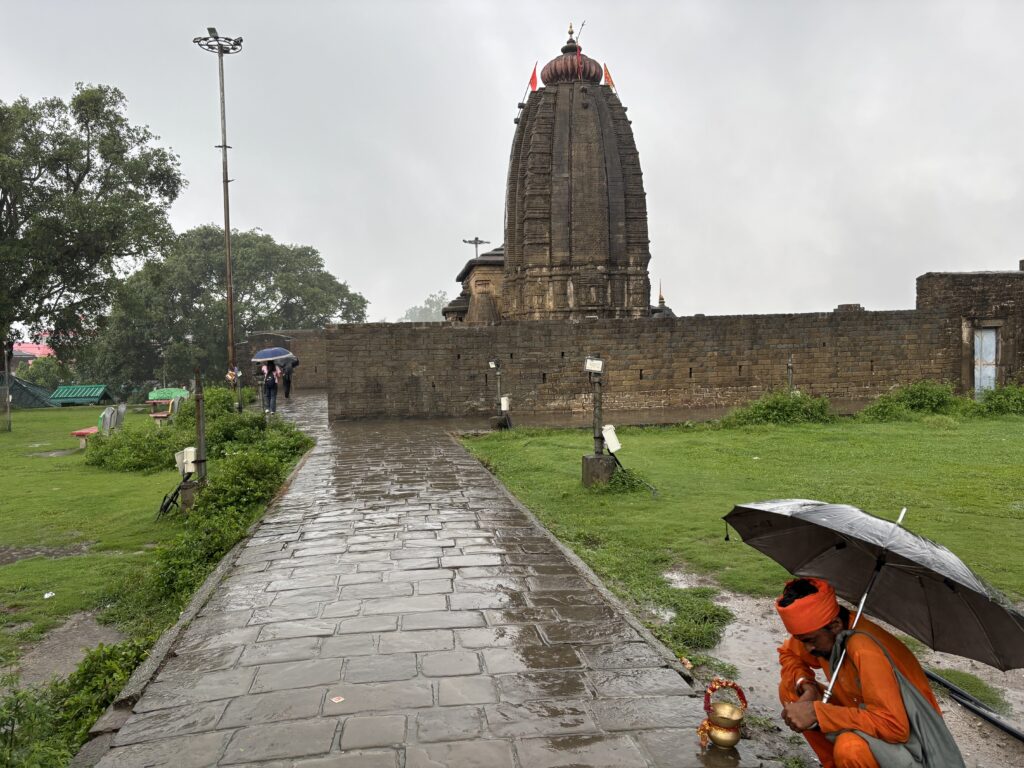
As we entered the temple the priest called us to hurry as the temple aws about to be closed for break. We quickly had Darshan of the deity and felt blessed for reaching on time. It was in fact an auspicious beginning of the day.
Baijnath Temple
Baijnath is an ancient Hindu Temple in Kangra district of Himachal Pradesh. Dedicated to Lord Shiva as Vaidyanath or the God of Physicians, the temple was built in 1204 AD by two local merchants, although the Shiva shrine existed previously.
Baijnath temple is considered highly sacred and is amoung the 12 Jyotirlingas (Sacred shrines of Lord Shiva).
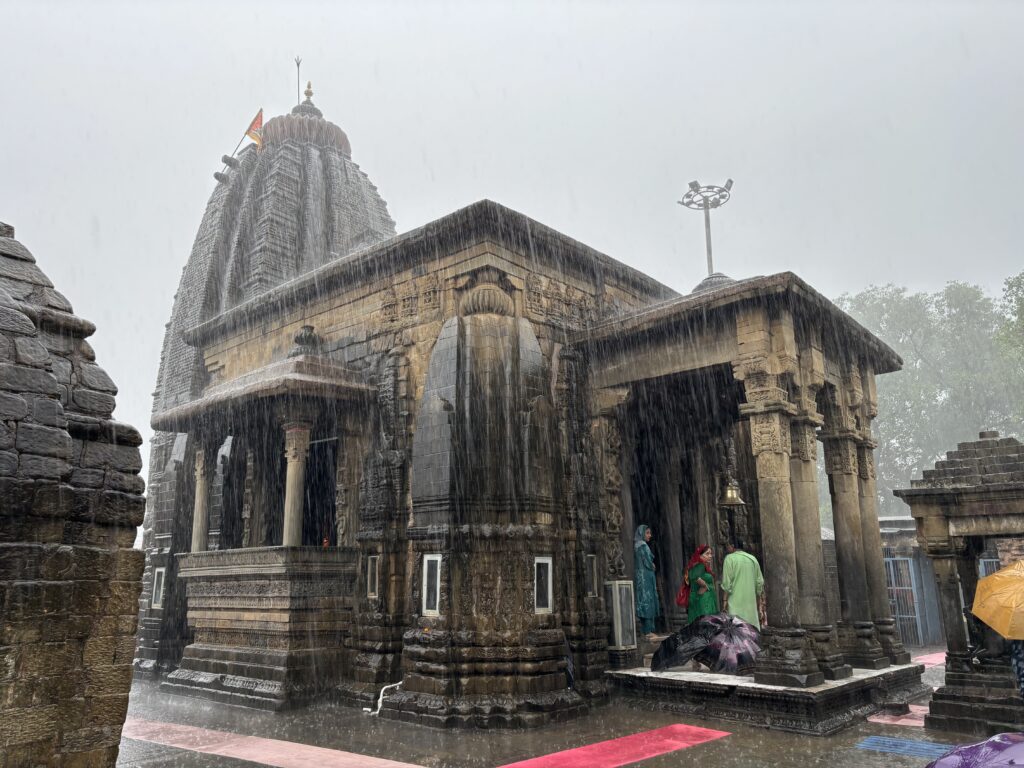
We resumed our journey for Chandigarh. By evening we reached Chandigarh before dark. Spending evening in Chandigarh and a short trip within Chandigarh in the morning we headed for Delhi next day and reached Delhi by evening.
Hope you enjoyed reading the article. I am sharing my Itinerary below so that you can also plan accordingly. Signing off for now. You may send your queries in the comment section below.
7 days Itinerary – Road trip to Barot Valley, Bir- Billing, Baijnath via Chandigarh
Day 1. Delhi to Chandigarh. Explore and stay at Chandigarh.
Day 2. Chandigarh to Barot Valley, 250 kms, 6hours drive, stay at Barot.
Day 3. Explore Barot.
Day 4. Explore Barot.
Day 5. Enjoy Drive to Rajgunda Valley and Reach Bir. Spend evening at Bir.
Day 6. Bir to Baijnath Temple, (20 kms) Have Darshan and then leave for Chandigarh.
Day 7. Explore Chandigarh and after lunch leave for Delhi.
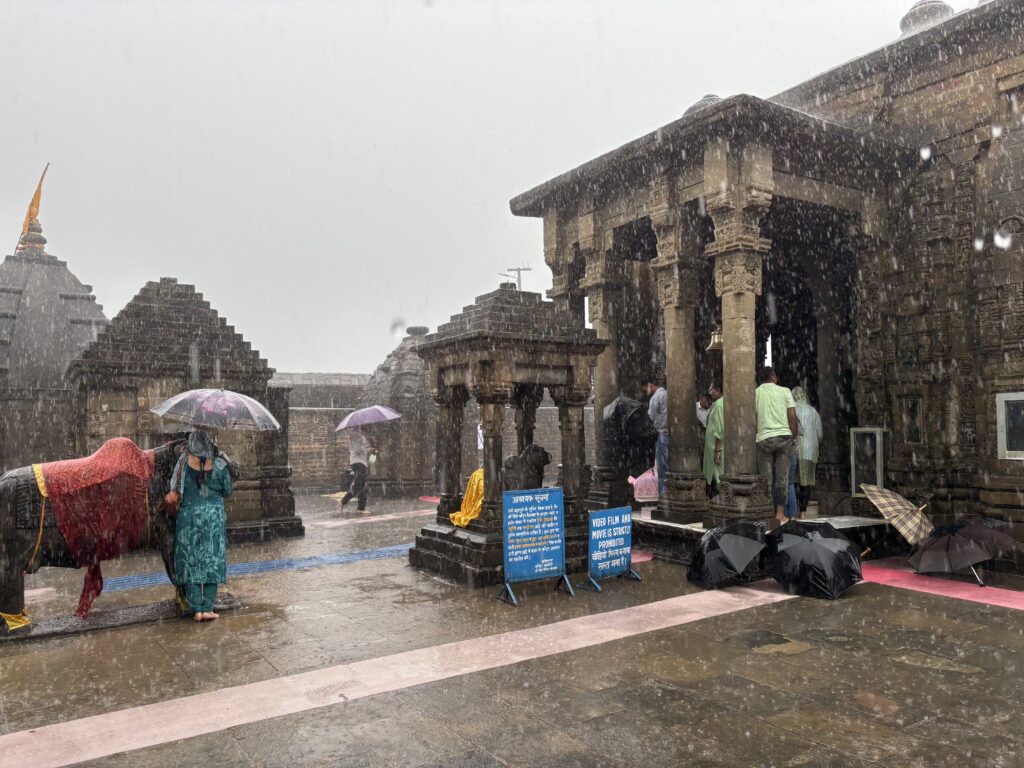
Thank You.
For more such. articles:
https://muddyshoe.in/bir-billing-the-beautiful-villages-of-himachal-pradesh/
https://muddyshoe.in/a-trip-to-the-beautiful-mountains-dharamshala-himachal-pradesh/
https://muddyshoe.in/visiting-the-beautiful-and-pristine-andaman-nicobar-islands/
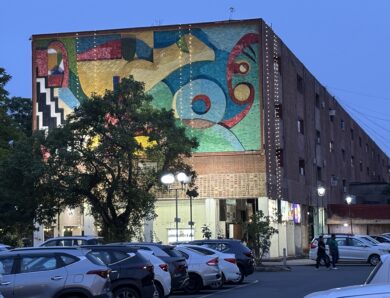

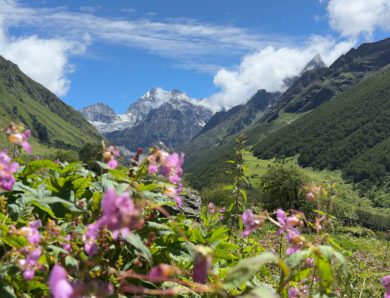
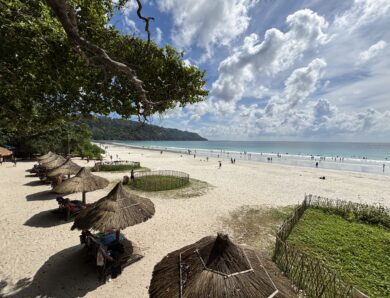
An awesome short summer trip…enjoyed the picturesque valley and glide through clouds on mountain road . A perfect off beat destination A MUST TRY.